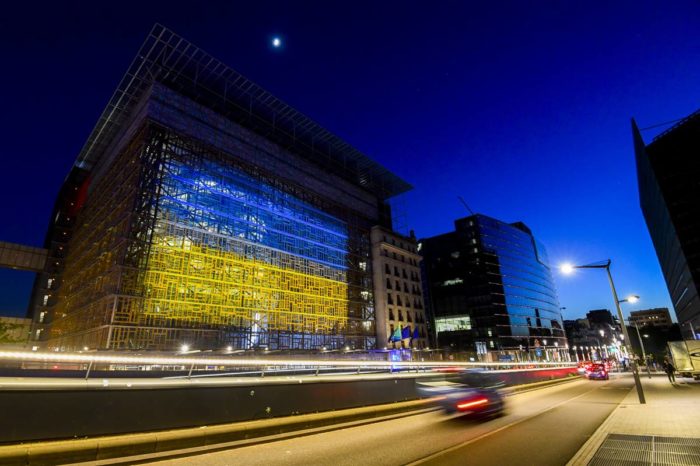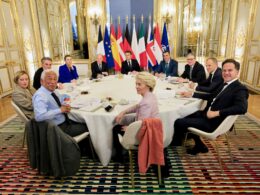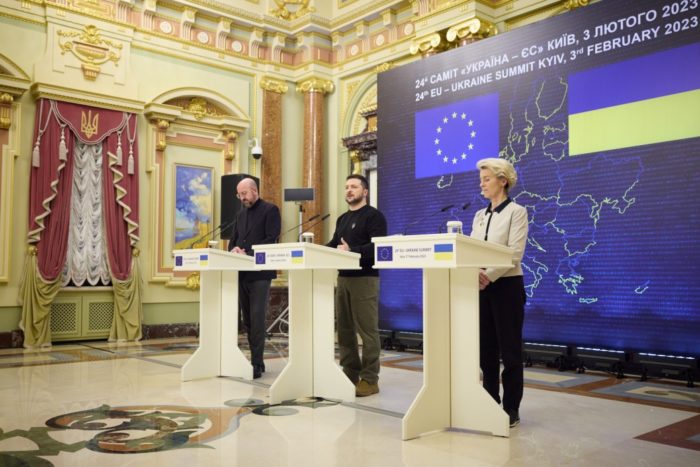Since 24 February 2022, a year of the active phase of the Russian war has passed. The war changed the international law system and united the entire world in fighting the aggressor.
Ahead of the anniversary of the invasion, on 14 February 203, the European Council announced it established a special Working Group to explore the possibility of using frozen Russian assets to restore Ukraine. This will be done through legal, financial, economic, and political analysis. Part of the preparatory work will also include getting a clearer picture of where Russian state assets are located and their total value. The work will be carried out closely with the Freeze and Seize Task Force set up by the European Commission to ensure the efficient implementation of EU sanctions against Russian and Belarusian oligarchs.
The Freeze and Seize Task Force froze Russian assets worth over $20 mn but didn’t confiscate them due to the lack of legal mechanisms. Then, EU leaders announced that such mechanisms would be developed, but no information on progress has been disseminated since then. The time has come to develop and implement them.
At the same time, EU leaders announced the development of such mechanisms, but no information on progress has been disseminated since then.
Legal issue
On 16 February 2023, the European Parliament adopted a resolution that, among other things, called on the member states to increase sanctions pressure on the aggressor and finally complete the process of adopting legislation allowing the takeover of immobilized Russian assets. Members of the parliament emphasized that the Russian war of aggression had fundamentally changed the geopolitical situation in Europe, “which necessitates bold, brave and comprehensive political, security and financial decisions by the EU.”
The political decision of the EU Council was approved after the meeting of the union’s leaders on 10 February in Brussels. It confirmed that despite specific steps taken by EU institutions and separate countries in this direction (Estonia), most EU member states still had not agreed on the mechanisms of confiscating Russian funds in their jurisdictions. Though, the appeal of the European Parliament should stimulate them to unite on this issue.
At the same time, President of the European Commission Ursula von der Leyen stressed on her official Twitter account on 30 November 2022 that the EU “will find legal ways” to confiscate Russian assets. Meanwhile, representatives of the G7 and the EU stated that there were no apparent grounds for a simple procedure of seizing the assets and sending them to Ukraine.
So, the reason for the confiscation process slowing down is that in most EU member states, confiscation of frozen Russian assets is legally possible only upon a criminal conviction.
However, as a first step, the EU is considering uniting Russian assets at the EU or international level, with the accrual of profits that can be transferred to the reconstruction fund of Ukraine.
Therefore, the newly-established EU Working Group that would look for other ways to apply Russian money to compensate for damage in Ukraine is most likely an interim measure until the experts find a legal mechanism to take over Moscow assets. After all, Ukraine urgently needs the funds now, as the large-scale armed aggression rages on for a year, and the destruction continues.
Moreover, by hesitating to adopt the legal mechanisms, the EU leaders confirm that they are not fully aware of the scale of blocked assets in European banks but aim to find out. For instance, the EU’s 10th package of sanctions against Russia, in particular, implies additional restrictions on banks which do not report how many Russian assets they block and store.
The following steps can strengthen the existing mechanisms of the European Commission, boost measures on detecting Russian “criminal” assets, and prevent sanctions violations.
1. Implement the EU sanctions whistleblower tool
This mechanism will encourage informing about past, ongoing, or planned sanctions violations, as well as attempts to circumvent EU sanctions. This instrument was developed by the EU but has not yet been applied by any country. To facilitate the effect, it should be adopted y the EU member states at national levels.
2. Introduce additional sanctions against third parties
The EU must develop, approve, and implement extra restrictions against third parties (including legal and individuals operating in EU member states’ jurisdictions) who contribute to destabilizing the situation in Ukraine or benefit from interaction with the Russian authorities. Although the European Union has created a mechanism of secondary sanctions against Russia, specific legislation still needs to be developed.
3. Review and block existing legal loopholes
The EU must review and block legal loopholes in EU member states that allow unfreezing assets controlled by oligarchs and other persons associated with Russian aggression. The EU Council has adopted over ten amendments to Regulation No. 269/2014 on restrictive measures for actions that undermine or threaten Ukraine’s territorial integrity, sovereignty, and independence. Although the amended Regulation continues to call for an asset freeze and a ban on providing funds and economic resources to Russian entities, it contains many exceptions. After a year of the war, it is time for the EU to assess the effectiveness of the regulation and review the amendments.
4. Increase pressure on offshore zones
In addition, the EU and the US should exert pressure on the British Virgin Islands, Liechtenstein, and Panama. Legislation in these countries allows companies to hide their assets under the banking secrecy policy. The EU and the US should find Russian oligarchs’ funds and stir up the “hornet’s nests.”
Even though the EU is united in its belief that Russia should pay for everything it destroyed as soon as possible, it’s evident that there will be no easy solutions.
The article was prepared as part of the project “Advocacy for the ‘green’ restoration of Ukraine through increasing support for the country and weakening Russian influence in the EU,” which DiXi Group carries out with the support of the International Renaissance Foundation.

Olena Pokanevych is an expert of the DiXi group
Related:
- International companies remaining in Russia funded one-sixth of its Ukraine war costs – report
- Are the sanctions on Russia working?
- Ukraine started selling confiscated Russian property at online auctions to collect money for the reconstruction of damaged objects
- Nearly year after Ukraine invasion, only 17 of 122 top companies have exited Russia – watchdog






